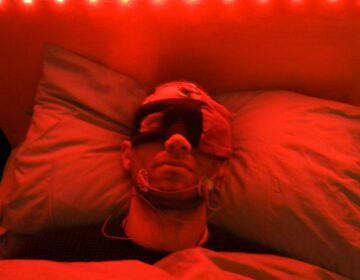It’s harder to fix our stuff these days. Maybe that’s a problem.
When a high-tech appliance breaks, some manufacturers discourage people from doing their own repairs. But a growing “right to repair” movement wants to change that.
Listen 10:42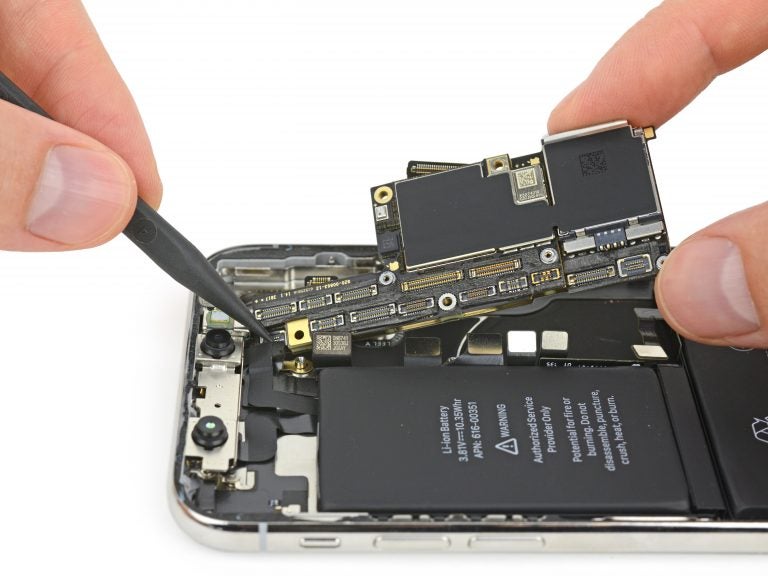
Companies are making it harder for you to repair your own appliances, and a growing repair movement is trying to change that. Credit: iFixit
Henry Ligier has had his power washer for a few years, and it recently stopped turning on. The warranty expired, so he can’t get it fixed at the hardware store where he bought it.
He’s pretty sure it doesn’t have any major issues, so he doesn’t want to just throw it away.
“This thing is going to run another 10 years, as long as it’s taken care of,” he said.
Ligier is in the recycling business and knows how wasteful it can be to chuck things that can be fixed.
“We do get curbside collections, and in that curbside collection there are numerous things that are coming across that are just perfectly good. Some are still packaged,” he said.
“It’s a shame that all this stuff goes to a landfill.”
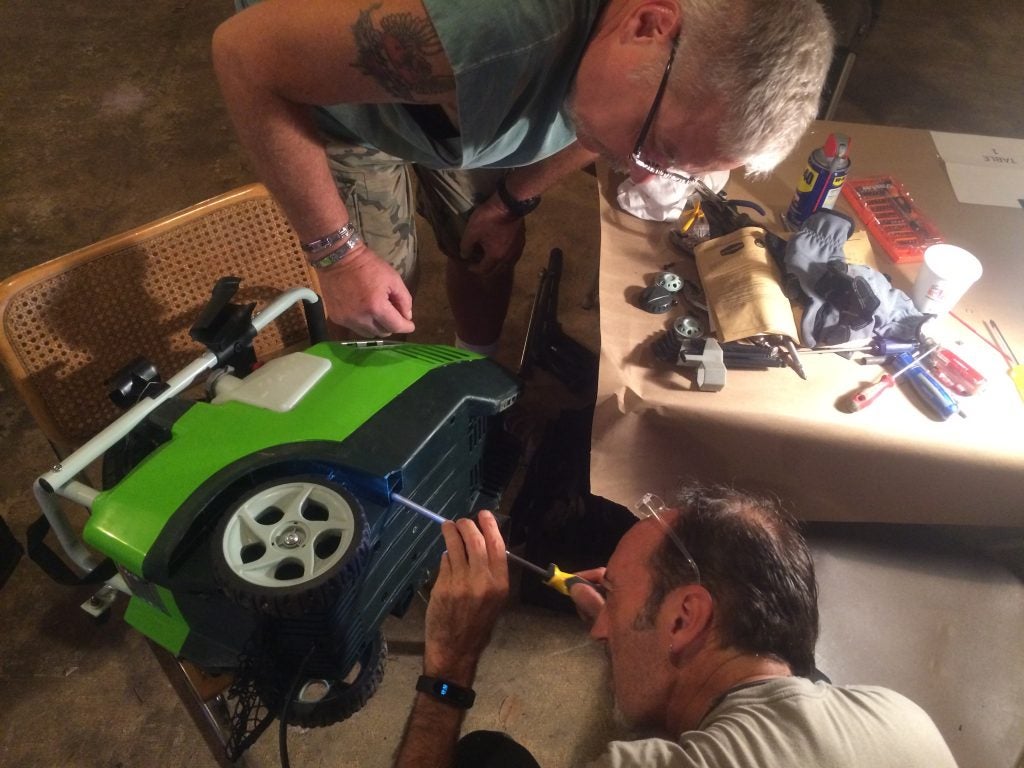
Ligier brought his power washer to a repair fair, where volunteers show people how to open up and fix their own devices. But as appliances have become more advanced, some manufacturers discourage people from doing their own repairs. At the same time, a growing movement around the world is trying to get people back to fixing things when they break. There are repair fairs in Chicago, Houston, New Zealand, the U.K., and India.
At the repair fair, Luca Favaro worked with Henry Liger on the power washer for an hour and a half. They made a custom screwdriver to open up the shell, reconnected some wires inside, and finally got it working again.
Favaro works in information technology, but he’s always liked taking things apart and putting them back together.
He recently spent four months working on a 1982 BMW motorcycle that wasn’t running. It had been sitting in the previous owner’s garage for years. He bought it for about $700. Now it’s working again, and he says he could resell it for a few thousand dollars.
But why would he?
“I’m super proud when I ride this motorcycle. It’s like the best thing ever; it just rides perfectly,” he said.
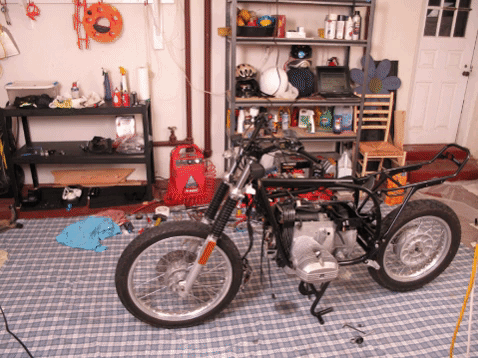
“Many times people don’t even try fixing that lamp they have on the desk because they are too afraid that there might be … rocket science,” he said. “But in reality, it’s just a couple of wires, a switch, and light bulb — and so it’s relatively easy to fix. And I think people shouldn’t be afraid, and they should give it a try …. They would have a good opportunity to actually fix a lot of things.”
Favaro, who’s a regular at the repair fairs, says people care about the things he fixes for them.
“This lady, when at the end the thing was actually working, she was crying. She was literally crying because it was her mum’s sewing machine, and she loved it,” he said.
After helping with the power washer, he worked on an old oscillating fan. It turned on the base, but the blades weren’t moving and no air was coming out. He tried to unscrew the fan and realized that the head of the screw had an unusual triangular shape.
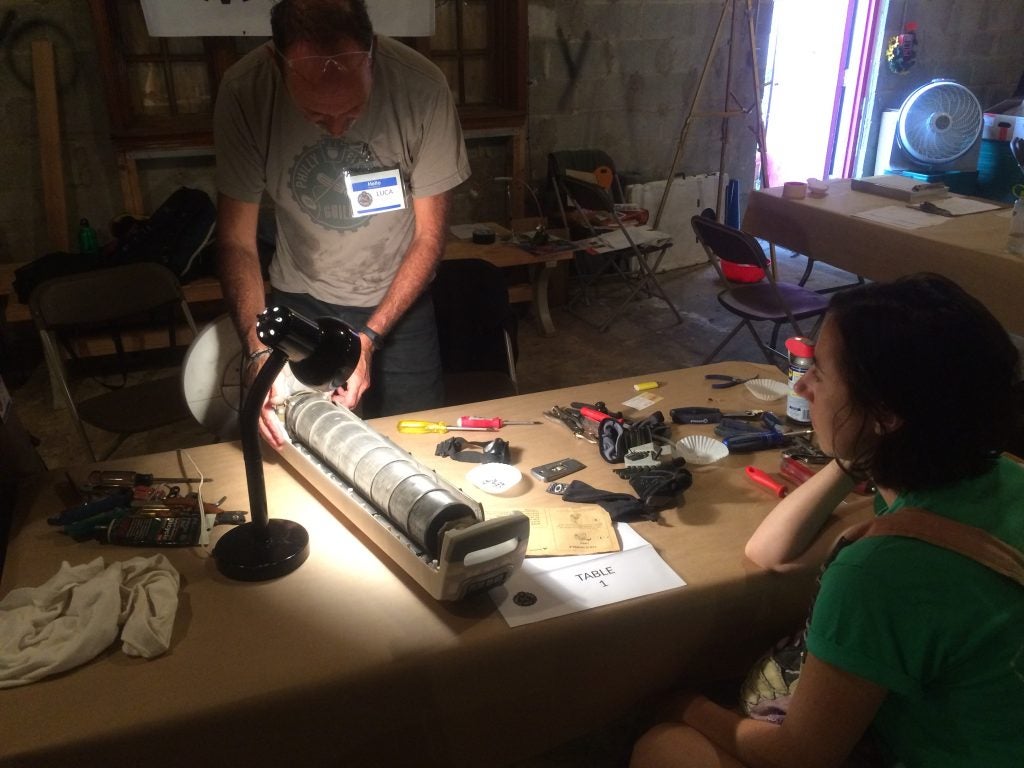
“Manufacturers, sometimes they put unusual screws so that you can’t take it apart, or that if you take it apart, you ruin things,” he said.
“They don’t want people to fix things, otherwise they’re not going to sell another fan.”
This is a growing problem if you want to take apart your fan, or your iPhone.
In the past, there were usually two kinds of screw shapes: the Phillips (shaped like a cross) or the slot (horizontal line) But now, you have increasingly unconventionally shaped screws, including squares, pentagons, hexagons, stars, and so on. That means people like Ben Davis, who helps run the repair fair in Philadelphia, have to buy increasingly weird screwdrivers.
“The first thing that the owner of the item thinks is, ‘Well, I’m never going to be able to, even if I wanted to fix this thing, I couldn’t even get into the back of it,’” Davis said.
He is one of the founders of Philly Fixers Guild. He’s also been fixing cars and other things at home since he was small, and he thinks it’s wrong when companies make it hard for you to open something that you own.
It also bothers Gay Gordon-Byrne. She’s the executive director of the Repair Association, a trade group for people who fix things for a living.
“When we bought things, we used to get a service manual or we could go to the library and get a service manual, and we could go down to a RadioShack or some other store and buy a part,” she said. “There was usually a diagram of how all these different parts connected … so it’s a matter of things not happening that used to happen. You used to be able to do all of these things.”

The repair movement
So many people around the country are so collectively annoyed about this that 18 states are considering “right to repair” laws.
Those proposals mean manufacturers like GE or Apple would have to give people access to those diagrams that show you how your appliances works. They’d also have to sell you spare parts. That way, companies don’t have a complete monopoly over repairs simply because they’re the only ones that have the special screwdriver that fits their special screw.
Many companies disagree with the proposed laws because they are concerned about consumer safety, says Kevin Messner, senior vice president of policy and government relations for the Association of Home Appliance Manufacturers.
He says it’s safer for us if we hire an authorized repair person to fix our fridges and dishwashers, rather than do it ourselves or call someone who hasn’t been vetted. The unusually shaped screws are intentional — to keep us out of complicated electronic equipment.
To that, Kyle Wiens said, “If you can’t fix it, you don’t really own it.”
He is a cofounder of iFixit, a website that offers detailed repair instructions for everything from MacBooks and iPhones to skateboards, power drills, and a robot dinosaur.
“I feel like we’re living in a world where we understand less and less of what’s going on around us,” Wiens said. “We use these wonderful devices that are glass and metal, and they’re perfect and pristine, and we’re not supposed to understand anything about how they work.”
Finding replacement parts
Jessa Jones, from upstate New York, used to be a scientist, and then a stay at home mother. A few years back, her toddlers flushed her iPhone down the toilet. She ripped out the toilet, smashed it with a sledgehammer, then figured out how to fix the phone.
Now she has a business in repairing phones and tablets, and teaching people how to do some of those repairs themselves. But she says repair people have trouble getting replacement parts for Apple products.
Let’s say someone cracks their iPhone 6 screen, and wants a new screen instead of a new phone. Jones says Apple doesn’t sell replacement parts, so she has to buy them from China, where the iPhone is assembled. She buys otherwise usable parts that don’t quite meet Apple’s standards, or were discarded because the manufacturing company made too many.
Jones calls it a parallel supply chain.
U.S. Customs and Border Protection calls it illegal. The parts she buys could be seized at the border.
“That is not just a crazy story. That has happened to people that I know in the industry,” Jones said. “A friend of mine in North Carolina had the Department of Homeland Security knock on his door … put a lock on his store and seize things like the back glass of iPhone 4S.”
Jones advocates for the right-to-repair laws; she says everyone who owns a phone should be allowed to see and understand what’s inside.
“My iPhone 6 — I walked around for years with it having no screws or shields on it, because I think everyone should know what the inside of a phone looks like,” she said. “I take phones to the elementary school and open them up and let kids play with them.”
A spokesman from Apple says the company wants its products fixed in a way that the company can stand behind. That’s why Apple wants you to go to an authorized repair person.
But Jones says her philosophy goes beyond any particular product or company; she says being able to fix something is empowering.
“It’s a really bad idea culturally for all of us to kind of sit on our hands and get this feeling: ‘This stuff is too complex for me. This stuff is too fragile, and it’s just really something you really have to have special training,’” she said.
“No, man. If something’s broken, open it up. Put your eyeballs on it. Everyone should touch and feel that stuff. That’s a really important linkage to who we are, where we’ve been, and where we’re going.”
WHYY is your source for fact-based, in-depth journalism and information. As a nonprofit organization, we rely on financial support from readers like you. Please give today.






